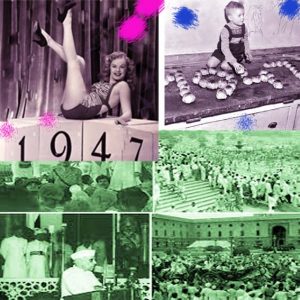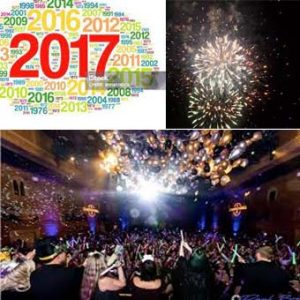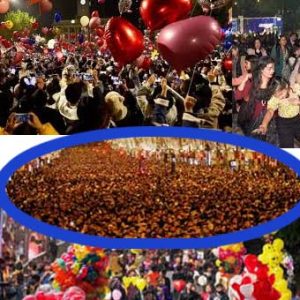Mumbai: As the clock struck midnight on August 15, 1947, India gained independence, marking the beginning of a new era. Over the decades that followed, the nation witnessed a transformative journey not only in political and economic changes but also in its cultural fabric, including the way Indians celebrate the arrival of each New Year. From subdued and traditional gatherings to cosmopolitan and globalized revelries, the evolution of New Year celebrations in India reflects the multifaceted journey of the nation.
1. The Early Years: Tradition and Family Focus (1947-1970s):
In the early post-independence era, New Year celebrations in India were characterized by a strong sense of tradition and familial bonds. Families gathered for home-cooked meals, religious rituals, and cultural events that emphasized the importance of unity and shared values. The festivities were intimate, reflecting the ethos of a nascent nation finding its identity.

The Transformative Journey of New Year Celebrations
2. Economic Liberalization and Urbanization (1980s-2000s):
The winds of change blew through India in the 1980s as economic liberalization and urbanization took hold. With an expanding middle class and increased exposure to global cultures through satellite television, the concept of New Year celebrations began to shift. Urban centers saw the emergence of Western-style parties, events, and countdowns, marking a departure from the more traditional festivities of the past.

3. Globalization’s Impact (1980s-Present):
The influence of Western New Year celebrations became more pronounced with the globalization of the 1980s and 1990s. The idea of bidding farewell to the old year and ushering in the new one with parties, music, and fireworks gained popularity. Today, major cities across India boast grand events, and the Westernized concept of New Year’s Eve parties at clubs, hotels, and restaurants has become ingrained in the cultural zeitgeist.
4. Commercialization and Consumerism (1980s-Present):
With the economic boom came the commercialization of New Year celebrations. Businesses recognized the festive season as an opportunity to boost sales, leading to an influx of marketing and advertising activities. Shopping for new clothes, accessories, and gifts became a common practice as people prepared to welcome the New Year with style, contributing to the consumerist aspect of the celebrations.
5. Public Celebrations and Events (1980s-Present):
Public celebrations underwent a paradigm shift from localized events to large-scale, city-wide spectacles. While the early years saw limited public gatherings with fireworks and cultural performances, major cities now organize massive events featuring music concerts, live performances, and elaborate firework displays. These events have become a communal celebration, drawing diverse crowds to usher in the New Year together.
6. Technology and Social Media (2000s-Present):
The advent of technology has revolutionized how Indians celebrate and share their New Year moments. Social media platforms play a pivotal role in connecting people during the celebrations, allowing individuals to share photos, videos, and wishes with friends and family across the globe. The virtual space has become an extension of the festive experience, fostering a sense of global community.

7. Safety and Regulation (1990s-Present):
As celebrations grew in scale and complexity, safety and regulation became paramount. Authorities implemented stringent measures to ensure public safety during events, including traffic management and crowd control. The focus on safety reflects a maturing approach to large-scale celebrations and underscores the need for responsible and secure festivities.
The evolution of New Year celebrations in India since 1947 is a testament to the nation’s dynamic journey. From the early years of tradition and familial focus to the present-day blend of global influences, commercialization, and technological integration, the celebrations have mirrored the changing face of India. As the nation continues to embrace new trends and cultural amalgamations, the annual transition to the New Year serves as a vibrant reflection of India’s rich tapestry of tradition and modernity.
Ends.


